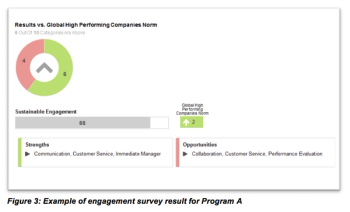
How companies can trust now to cultivate corporate reputations that build business.

How companies can trust now to cultivate corporate reputations that build business.

Keshia Vaughn looks at how machine learning can transform commercial planning and outlines what teams will need to deploy it effectively.

New realities are transforming the global environment and upending a business model based on the presumption of ever more connected markets. Paul A. Laudicina asks, What does this new age mean for pharma?

Executives highlight approaches around recent landmark approvals for digital medicine and gene therapy.

Chad Storlie draws on military training to outline how all industries and organisations can create great junior leaders.

Commercial leaders can boost product launches with a data-driven roadmap.

Daniel Patrick discusses the small biotech company journey from an incubator of ideas to the ability to shepherd an R&D asset through its pipeline to achieving commercial success.

New ideas and technological advances are two key methods leading to culture change in an organization. Graham Francis reports.

Alison Horstmeyer discusses how pharma executives can apply four attributes of curiosity to negotiate VUCA (volatile, uncertain, complex, and ambiguous) conditions and improve organizational outcomes.

The Pfizer restructuring will be a case study in whether corporate restructuring & innovation can co-exist or whether M&A is the more viable answer, writes Edward Pratesi.

Outlining a real-world example in which building and operationalizing a patient- and customer-centric commercialization strategy drove a successful launch from a “standing start.”

How navigating compliance risks requires so much more than policies and procedures.

Josh Reisberg outlines the foundation of a broad, overall defense strategy for generic companies embroiled in Hatch-Waxman patent infringement litigations.

Jonathan Kraft shares his family's secrets on what it takes to lead a successful organization, while also creating lasting brand power.

If companies are serious about building a sustainable organization for their employees and becoming a partner to key accounts, they need to be prepared to remodel their whole business around it, writes Miranda Wheatley Price.

With so much information readily available companies have lost a significant level of control over how and when details about their progress in drug development and planning related to approval, launch, and commercialization are disseminated.

The role of the medical affairs professional in the biopharma hierarchy has grown considerably in recent years, but challenges remain in its accent to true strategic partner with the C-suite.

Mark Bouch, Stephen Bungay, and David Roblin outline how the technique of "mission command", a military approach to setting direction and executing strategy in the pharmaceutical industry, has developed over the last ten years.

Before entering into risk-sharing agreements, manufacturers must understand the challenges and implications, writes Kimberly E. White.

Pamela Buffone from Privacy Analytics discusses growth in the specialty pharma sector and making patient data protection a top priority.

Jayachandra Reddy and Rishit Thakkar discuss the challenges facing early entrants in the Non-alcoholic Steatohepatitis market.

With the NASH pipeline filling up fast, Mariel Metcalfe looks at what pharma companies need to do to ensure their products do not end up as also-rans in this dynamic new market segment.

Our latest review reveals that those companies scoring well on profit management metrics are best positioned to maintain that crucial edge in performance execution.

A review of a recent FSP in which the CRO partner assumed clinical monitoring and site support responsibility for more than 50 ongoing trials.

Following the unveiling of the UK’s post-Brexit life sciences strategy, Neil Grubert looks at the measures related to market access, a particular challenge in the UK market and key to its future success in the sector.